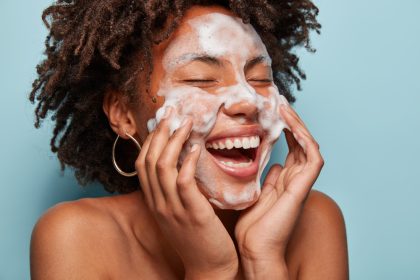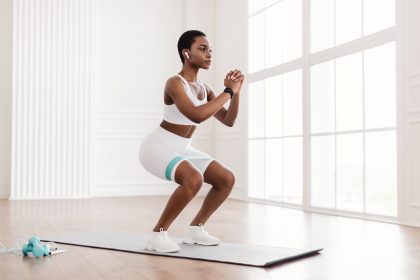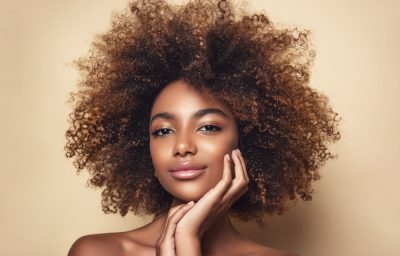Comprehensive testing unveils best formulas for every skin type

In the world of cosmetics, choosing the right concealer is more than just a matter of personal preference — it’s about selecting the formula that best suits your skin type and needs. Thanks to extensive scientific research and real-world testing, consumers can now make more informed decisions when it comes to concealers. This evidence-based guide takes you through the latest findings on concealer technology, formula classification, and application methods, ensuring you get the most out of this essential makeup product.
Understanding concealer technology
Modern concealer formulations have come a long way, incorporating advanced cosmetic science to deliver better coverage, wear, and skin benefits. Whether you need to hide blemishes, dark circles, or other imperfections, the latest formulas are designed with cutting-edge ingredients that cater to various skin types and concerns. Some of the most significant technological advances in concealer development include:
- Peptide-enhanced coverage: Peptides are known for their anti-aging properties and are now being used in concealers to help improve skin texture while providing coverage.
- Light-diffusing particles: These particles are engineered to reflect light, making them perfect for brightening areas like the under-eyes and achieving a soft-focus effect.
- Skin-mimicking polymers: These polymers help concealers adhere to the skin more naturally, providing a seamless finish without cracking or settling into fine lines.
- Hydration-locking compounds: Many newer concealers include ingredients like glycerin and hyaluronic acid that lock in moisture, keeping the skin hydrated throughout the day.
These innovations ensure that concealers not only conceal but also care for the skin, making them more than just a temporary solution.
Formula classification analysis
When it comes to selecting a concealer, knowing which formula works best for your skin type and preferences is essential. Research has identified three primary categories of concealers based on their formulation:
- Liquid formulations: These are the most popular type of concealers, especially for under-eye coverage. Their fluid consistency allows for smooth application and blending, making them suitable for all skin types. They offer a range of coverage from light to full, depending on the product.
- Cream-based products: Cream concealers are thicker than liquids and provide fuller coverage. They’re great for hiding blemishes and imperfections, especially for those with dry or mature skin. Their richer texture makes them perfect for use in targeted areas.
- Solid stick formats: Stick concealers are compact and easy to apply, making them a favorite for on-the-go touch-ups. They offer medium to full coverage and are often used to cover blemishes, redness, and other localized imperfections. These concealers can be more difficult to blend, so they are best suited for those who need precise coverage.
Each format has its own unique benefits, and choosing the right one depends on your skin’s needs and the specific coverage you desire.
Performance metrics
When evaluating concealers, several scientific criteria come into play to determine their overall performance. These metrics include:
- Pigment density: The amount of pigment in a concealer directly affects its coverage. High pigment density means better coverage, especially for dark circles and blemishes. The higher the concentration of pigment, the more effective the product will be at concealing imperfections.
- Wear duration: How long a concealer lasts without fading or creasing is a critical factor. The longer a concealer stays in place, the less you need to worry about touch-ups throughout the day. Many formulas are now designed to be long-wearing, making them ideal for full days of work or special events.
- Oxidation resistance: Some concealers tend to oxidize (darken) after application. This is especially common in products with a high amount of pigments or those that contain oils. Choosing a product that resists oxidation ensures the concealer maintains its true color throughout the day.
- Skin compatibility: Concealers are formulated to work with specific skin types. Some products are designed to control oil, while others focus on providing hydration. Choosing a formula that complements your skin type ensures that the concealer will not clog pores or irritate your skin.
- Coverage efficacy: This refers to how well the concealer hides blemishes, redness, or dark circles. A good concealer should provide the level of coverage it promises, whether light, medium, or full, without looking cakey.
Skin type compatibility
Clinical testing has shown that certain concealer formulas work better for specific skin types. Here’s how you can select the right one for your needs:
- Oily skin: If you have oily skin, look for concealers with a matte finish and oil-controlling ingredients. These products often contain long-wear polymers that prevent the concealer from breaking down throughout the day. They will keep your skin looking matte and fresh without contributing to excess shine.
- Dry skin: For dry skin, choose concealers with hydrating compounds and moisture-retention technology. These products should provide a more flexible coverage that won’t dry out the skin or emphasize fine lines. Look for ingredients like glycerin or hyaluronic acid, which can help lock in moisture and keep your skin looking dewy.
- Combination skin: Those with combination skin should opt for adaptive formulas that balance coverage and hydration. These concealers typically offer buildable coverage and perform well in both oily and dry areas of the face. Proper application techniques can further help balance the wear time and finish of the product.
Application methodology
The application of concealer can also affect its overall performance. Evidence-based techniques have shown that the following methods can enhance the results:
- Temperature optimization: Slightly warming your concealer before application can help it blend more easily and create a more natural finish. This can be done by rubbing the product between your fingers or using a makeup sponge.
- Layer integration: Instead of applying a thick layer of concealer in one go, build up coverage gradually. This prevents the product from looking cakey and ensures a more natural-looking finish.
- Setting procedures: Setting your concealer with a translucent powder helps lock it in place and reduces the chances of creasing. This is especially important for oily skin types who need extra security to prevent the concealer from sliding off.
- Coverage building: For maximum coverage, apply concealer in thin layers, allowing each layer to dry slightly before applying the next. This technique helps achieve a flawless, airbrushed finish that lasts longer.
Conclusion
Choosing the right concealer for your skin type is an essential part of building a flawless makeup routine. By understanding the science behind concealer formulations, performance metrics, and skin compatibility, you can select a product that delivers both coverage and care. Whether you have oily, dry, or combination skin, there’s a concealer out there that’s perfect for you. Use the tips and insights from this guide to find a concealer that not only covers imperfections but also enhances your skin’s natural beauty.











